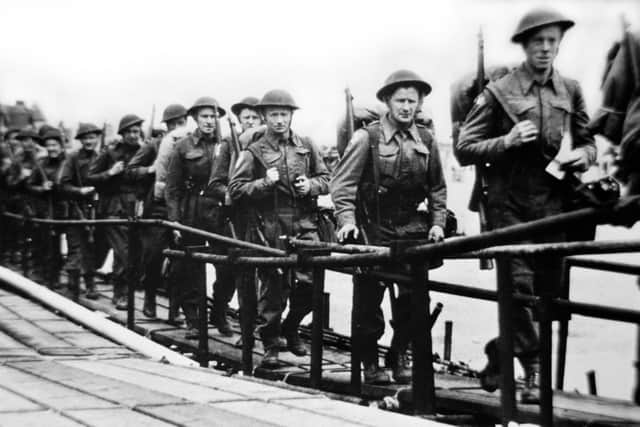D-Day: Story of the Normandy beach landings in 1944 and Manchester regiment’s involvement
and live on Freeview channel 276
June 6 1944 was the day on which allied troops landed in occupied Europe for the first time in several years. Adolf Hitler and the Nazis had invaded large areas of mainland Europe, and the allies were in need of a breakthrough.
This would come in early June 1944. Over 130,00 allied soldiers landed on beaches across Normandy, Northern France. The troops landed on five beaches, code named Utah, Omaha, Gold, Juno and Sword.
Advertisement
Hide AdAdvertisement
Hide AdPlanning for D-Day had begun months earlier, with the allies being aware of the importance of regaining a foothold in Europe as early as 1941- the plans for the invasion were first submitted to allied high command in 1943.
Secret missions from the British secret service and French resistance fighters helped to sabotage some of the German defences. This provided an advantage to the troops who landed on the beaches on June 6.
With contributions from land, sea and air, the D-Day landings - known as Operation Overlord - was the largest naval, air and land operation in history. Nearly 7,000 naval vessels took part in the mission.
The success of the day allowed the allies to begin pushing Germany out of France. The foothold in Europe did not come without a cost, however.
Advertisement
Hide AdAdvertisement
Hide AdOver 10,000 allied soldiers were killed on D-Day, many on the beaches as they fought their way towards the cliffs and often well-defended German positions. Their efforts ensured that the gateway into Europe could be opened up, and over the next three months allied troops made their way closer to Berlin.
The Manchester regiment in Operation Overlord
D-Day wasn’t the end of the war, but it did show that victory was possible for the allies. What followed was several months of fighting and facing multiple counter attacks from the Germans. By August, Hitler’s forces were in retreat.
The Manchester regiment, although not involved on D-Day, landed in France around three weeks later. These were soldiers of a new 1st battalion which had been formed in 1942. The soldiers fought hard as they made their way across France and by September they were in Antwerp, Belgium.


In the winter of 1944-45, the Germans staged their final major offensive of the war in the Ardennes forest. Also known as the ‘Battle of the Bulge', the Manchester regiment provided artillery and machine gun support for the infantry.
Advertisement
Hide AdAdvertisement
Hide AdThe first battalion of the Manchester’s saw the last of their fighting in Hamburg in early May 1945 when the city surrendered. Other branches of the regiment were also in Germany at the time of surrender, including some troops in Bremen.
Comment Guidelines
National World encourages reader discussion on our stories. User feedback, insights and back-and-forth exchanges add a rich layer of context to reporting. Please review our Community Guidelines before commenting.
